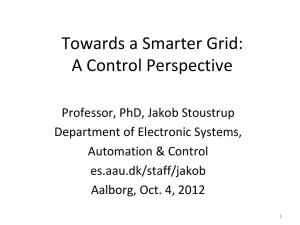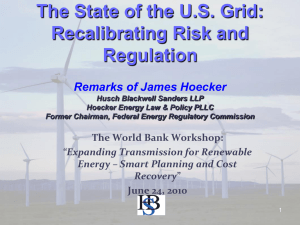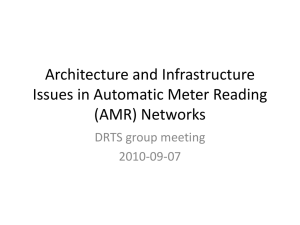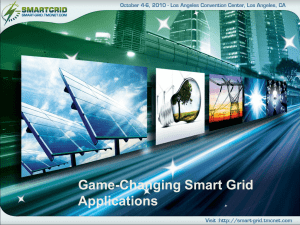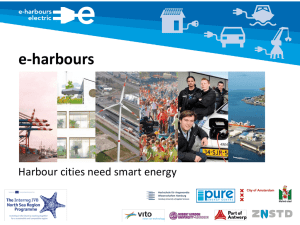The US and Russia getting “smarter”: Russian
advertisement
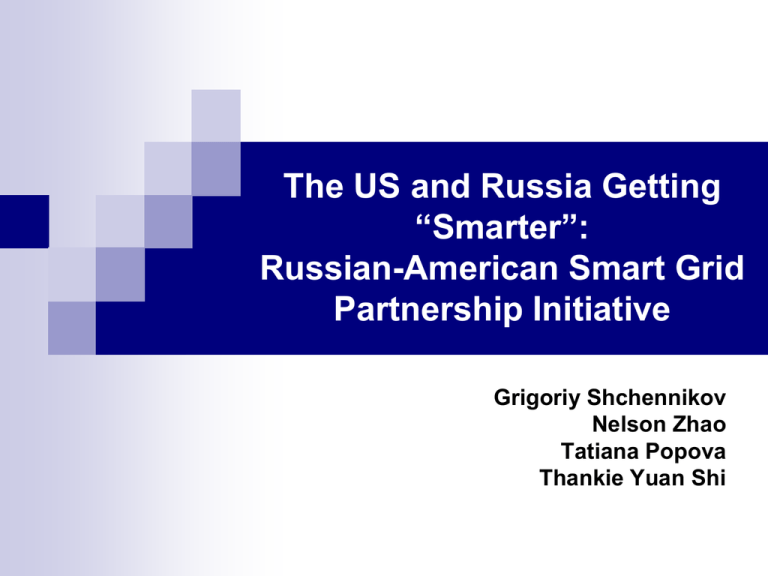
The US and Russia Getting “Smarter”: Russian-American Smart Grid Partnership Initiative Grigoriy Shchennikov Nelson Zhao Tatiana Popova Thankie Yuan Shi Growing consumption – a challenge for the grid GDP per capita (current US$) Population, total Source: World Bank World electricity consumption Consumption per capita Source: Enerdata Existing grid One-way flow electricity • Centralized, bulk generation, mainly coal and natural gas • Responsible for 40% of human-caused CO2 production • Limited automation and situational awareness • Lack of customer-side data to manage and reduce energy use Source: IEA Evolution from traditional to smart grid Smart Grid Successful Partnerships • Korea – leader in the area of the smart grid technologies • State of Illinois - advanced research capabilities at national labs and universities • sister-state agreement between the Jeju Special Self-Governing Province and the State of Illinois • Additional project opportunities - smart buildings, smart transportation, smart communities, and R&D. Dignitaries in Illinois and South Korea have numerously affirmed the mutual benefits of this model partnership for smart grid collaboration Smart Grid Partnerships May, 2011 - Memorandum of Understanding Areas of cooperation: • AMI smart meters • distribution automation • best practices in business processes • creation of smart grid innovation cluster • supportive government policies to promote smart grid • exchange of technical information and experiential data Slowdown in the development of the partnership Fundamental Changes Pt. 1: Russian Policy Recommendations Clear motivations and incentives are needed for reform. Why? • Market suspicion • End-result Uncertainty Fundamental Changes Pt. 1: Russian Policy Recommendations (Cont.) Standardize implementation rules and regulations! • i.e., An absence of reliable standards for conducting energy savings contracts • Risks for consumers AND public service providers New smart grid outreach and consumer awareness program • Residential communities just aren’t shown the benefits of smart grid technologies • That leads to overall mistrust of energy companies and lack of local community support Fundamental Changes Pt. 2: U.S. Policy Recommendations Policy-makers need a compelling value proposition for consumers • Why should we support grid modernization? What benefits come with this? …. How much more do I have to pay? Must define key value areas • Reliability? Efficiency? Safety? Etc. Fundamental Changes Pt. 2: U.S. Policy Recommendations (Cont.) Define set smart grid performance goals for all 3 levels of government Better coordination among federal, state, and local regulators The Next Sister City Who’s Next? • Energy Working Group expressed interest in a second pair of sister cities • Russia chooses Kaliningrad and United States was expected to announce their pick in 2012 The Smart Grid Maturity Model • Provides a framework for understanding the current state of you smart grid deployment and capability. • Assesses how mature your utility’s smart grid is. • Identifies gaps that need to be filled and helps make a strategic plan Domains Levels Smart Grid Maturity Model Domain Abbr. Strategy, Management, and Regulatory SMR Organization And Structure OS Grid Operations GO Work and Asset Management WAM Domain Technology Customer 1 • Initiate 2 • Enable 3 • Integrate 4 • Optimize Abbr. TECH CUST Value Chain Integration VCI Societal and Environmental SE 5 • Pioneer Smart Grid Applied Time of partnership End Point Glendale Water and Power San Diego Gas and Electric Why Glendale? • Sacramento Municipal Utility District • Baltimore Gas and Electricity Glendale has what the working group wants • Level 5 Pioneers • Provide “cutting edge” technology More will follow

